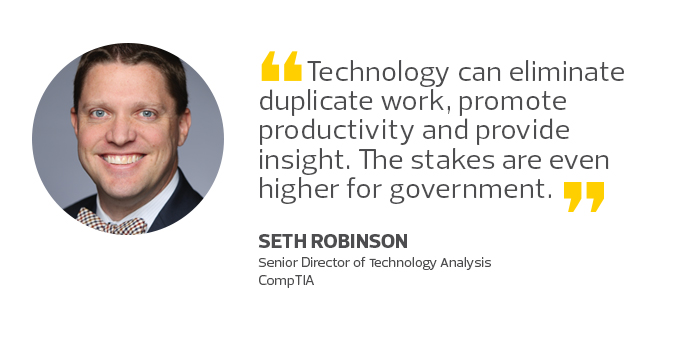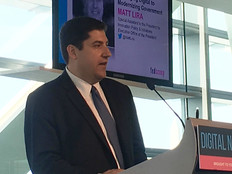The Stakeholder You Need for Digital Transformation
Digital transformation is sweeping the corporate landscape. The introduction of cloud computing and mobile devices has created a new platform for innovation. Increased digital literacy has made it easier for non-IT employees to use digital tools for their daily work.
New technology is only the tip of the iceberg, though.
CompTIA defines digital organizations as companies with the proper structure and processes to drive results with modern technology. We explore all three in our study “Building Digital Organizations,” but structure seems to be a sticking point.
For government agencies, the appropriate structure could bring huge advantages. Today, government technology is behind the curve due to legacy infrastructure and red tape that slows modernization. Putting the right technology in place requires streamlined processes, and streamlined processes require buy-in from all parts of an organization.
Federal IT Officials Must Manage Expectations
That’s no easy task. To start, functional areas typically speak a different language from IT leaders. For a collaborative environment, functional areas need to understand the safeguards that IT shops have in place. At the same time, IT leaders need to avoid technical jargon and better understand the agency’s strategic goals.
Another obstacle lies in managing expectations. Consumer technology can create overly optimistic expectations that don’t always translate to office settings. Simple user interfaces, high availability and tight integration don’t come easily. That’s why it’s important for everyone involved in technology decisions to understand the true costs and capabilities of potential solutions and the back-end support they will inevitably require.
Perhaps most important, workers must be assured the pursuit of technology will not put them out of work. Pundits proclaim automation will soon wipe out most of the jobs we know. Meanwhile, real stories of technical workers training lower-cost replacements persist. But the truth is that companies have shown a preference for mixing human innovation with advanced technology.
Government should follow.

The rise of cloud computing also brings with it fears that existing IT workers could be displaced. Instead, CompTIA’s research and experience show that most organizations would prefer to keep their technical staff, allowing them to apply their skills to more business-critical work as they outsource or automate routine tasks.
A healthy, collaborative organizational structure is critical for the next stages of transformation. To effectively modify policies, functional groups must understand the core objectives of all other groups, and there must be trust among parties.
Federal IT Needs a More Flexible Architecture
Although agencies have well-defined processes for procuring technology and using data, they generally eliminate one of the emerging trends in digital transformation: independence.
With an approved methodology and open lines of communication, organizations are free to drive technology on their own if they keep IT shops up to date on their work.
Ultimately, the right structure and processes should lead to a modern, flexible and powerful IT architecture. This kind of setup would accelerate the tendency of agencies to outsource technical work. Then agencies could quickly build their capabilities around the Internet of Things, data analysis and cybersecurity.
None of this will happen overnight. But in the long run, agencies can gain operational benefits. Technology can eliminate duplicate work, promote productivity and provide insight. The stakes are even higher for government. It’s impossible for agencies to be successful and keep up with modern society without transformation.
The tools are there; the process begins with developing and empowering the workforce.









